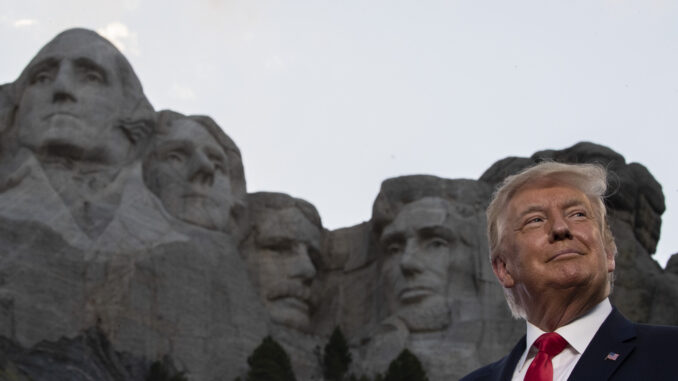
Most of today’s so-called experts totally misunderstand President Donald J. Trump’s daily activities. They fail to think about long strategic patterns and lack the historical knowledge to contextualize his behavior.
Trump is rapidly growing a sense of Republican teamwork in Congress, state legislatures and with governors across the country. If he keeps this pace, Trump will clearly be in the same league as Presidents Thomas Jefferson, Abraham Lincoln and Franklin Delano Roosevelt.
All three built enormous national majorities. The 2026 election could be the watershed moment if Republicans gain in the House, Senate and the states.
There are certain patterns which the great majority-making national leaders follow.
First, they demolish their opposition.
Jefferson was relentless. He organized his allies into the Democratic-Republican Party (now the oldest continuing political institution in the world). He drove the Federalist Party to the edge of extinction. As his faithful supporter, President James Madison continued to strengthen the Democrats and weaken the Federalists.
One symbol of this relentless partisanship was the word “gerrymander.” Massachusetts Gov. Elbridge Gerry desperately redrew that state’s congressional districts to save Federalist seats. One person suggested the strange new map looked like a salamander. Gerry’s salamander became gerrymander. Ultimately, the effort failed as popular support for the Federalists dried up.
Lincoln entered the most contentious and difficult presidency in American history. His name was not even on the ballot in most Southern states. He got a plurality with 40% of the vote. However, he faced three opponents and swept the electoral college outside the South.
After the 1860 election, it was clear the nation was drifting toward Southern succession or civil war to preserve the Union. Lincoln was a career politician who helped grow the Whig Party ― and then helped lead the new Republican Party. He understood the importance of public opinion and the power of patronage in politics.
Lincoln spent a lot of time trying to understand what would work — and what was needed to maintain public support. His Gettysburg Address brilliantly combined history, morality and idealism. Importantly, it was relatively short and accessible to every Northerner. In effect, Lincoln challenged them to support the war or abandon those who gave their lives for the cause of the Union.
On patronage, Lincoln ruthlessly fired 1,200 of the 1,500 policy-making federal workers. It was an 80% discharge rate. Those complaining about Elon Musk and DOGE should consider Lincoln’s record for perspective.
After a lifetime of politics and government, I can attest personnel is policy. If you want a MAGA State Department, you must replace a significant part of the career professionals who have a globalist worldview. If you want a MAGA Environmental Protection Agency, you must replace a lot of the career professionals who are dedicated to a radical environmental worldview. The list goes on.
By 1864, Lincoln had grown a Republican Party which ultimately dominated American government for the next 68 years (excepting two short detours with Presidents Grover Cleveland and Woodrow Wilson).
President Franklin Delano Roosevelt then ended this Republican dominance. He was as shrewd and determined as Jefferson and Lincoln. Roosevelt monitored public opinion and constantly maneuvered to put Republicans in impossible-to-defend positions. He used patronage of a rapidly growing government (the precursor to the monstrosity we have now) to build a coalition that included black voters in Chicago, Mississippi segregationists, labor unions and big business.
Roosevelt was so effective Democrats dominated the House from 1928 to 1994. There were 64 years of Democrat majorities versus two one-term Republican majorities. Republican presidents could win within the framework Roosevelt built. They could push for a more conservative version of the Roosevelt system. But none were prepared to take it apart.
Trump is the first president in modern times to win with a platform based on deep, dramatic change. If you look past the daily zigs and zags and instead focus on overall patterns, Trump is clearly in the tradition of Jefferson, Lincoln and FDR.
If you keep these historical figures in mind, they explain a great deal of Trump’s daily behavior and the strategic patterns he is forging.
Newt Gingrich was Republican speaker of the House.



